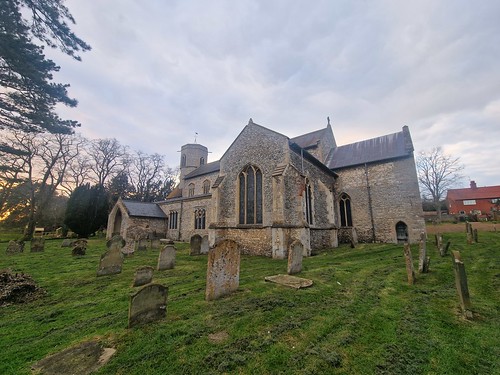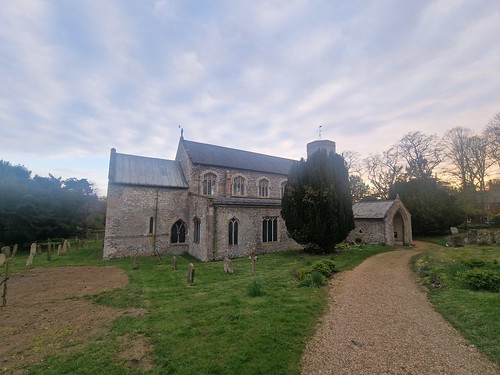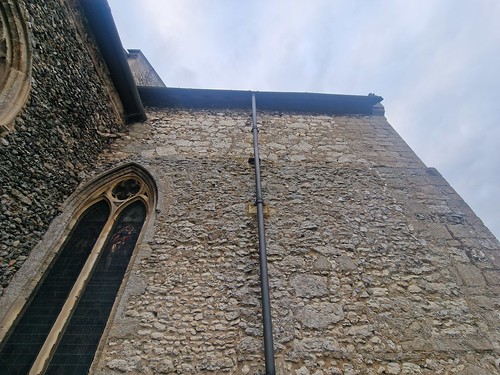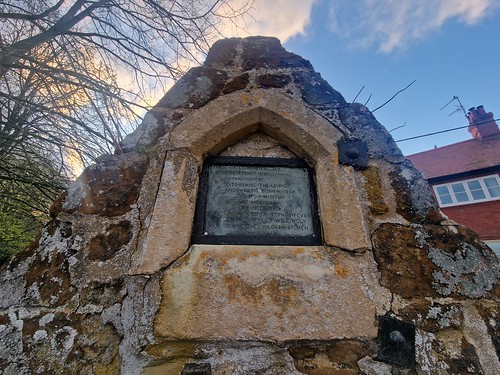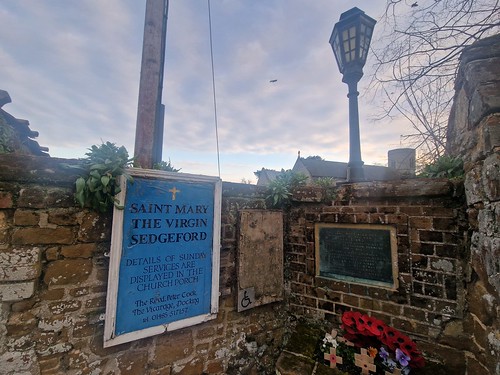Sedgeford – St. Mary the Virgin Church
Richard and I were off for an evening meal nearby, so we decided to stop off at St. Mary’s Church in Sedgeford. Unfortunately, our evening arrival meant that the church was closed to visit inside, but it’s an intriguing building to look at externally.
As ever, there is plenty of conflicting information about the church’s history on-line, but I think I’ve got some sort of vague grasp on it now. The Saxon church was in a different place and when the settlement moved a new grander building was constructed here. The tower is complex, it might just be partly Saxon, but is likely Norman from around the late eleventh century although some historians date it another century after. The Tudors hacked the building about, adding the clerestory in the fifteenth century and also adding the sections around the tower. However, some historians suggest that the tower structure was all built at the same time, but I’m going to just link to the article by Stephen Hart rather than claim any additional knowledge here.
Until the Reformation, this was a Peculiar meaning that it was under the control of the Prior and Monks of Norwich Cathedral. By the middle of the nineteenth century, the building was falling down and that was seen as sub-optimal given that the congregation had to take their umbrellas into the church with them when it was raining. Fortunately, the Victorians made the necessary repairs, although this Grade I listed building has found itself at risk once again recently, with the medieval wall paintings inside needing urgent conservation.
The almost cavernous north porch which appears to be lacking the doors which once protected it from the elements.
This complex set-up has the round tower which has been encased by later additions (or not later additions, depending what you believe). Most of the round tower is intact within here, with the vestry to the left and another room to the right.
The south of the church, with another open porch. The church’s web-site notes that in the mid-nineteenth century this porch was used by smugglers to store their illicit goods.
Numerous add-ons, including a south transept which is embedded slightly into the chancel which feels just a little strange. There was a north transept at one point as well, but it has been taken down. Or, more likely, fallen down, likely sometime in the period after the Reformation or in the seventeenth century. George Plunkett has a photo from 1978 taken in a similar location.
The chancel was reconstructed in 1770, partly because some of it fell down in the middle of the eighteenth century. The odd placement of the priest’s door, visible in the previous photo, shows how truncated this new chancel is.
This feels like a Victorian repair given how neat and tidy it is compared to the rest of the church.
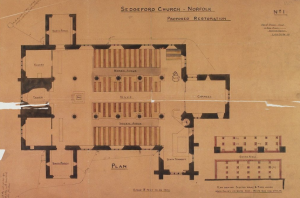
Looking at the Victorian restoration gives some insight as to what is happening with the interior.
Richard noticed the irregular way in which this gravestone has eroded away, I can’t imagine this has that long left.
A memorial by the gate which commemorates the 20 people who lost their lives to a typhus outbreak in 1852.
There’s a separate war memorial in the village to those who died in the First World War, but this tablet mentions the names of the seven men who died in the Second World War. There’s more information on these men at the base of http://www.roll-of-honour.com/Norfolk/Sedgeford.html.
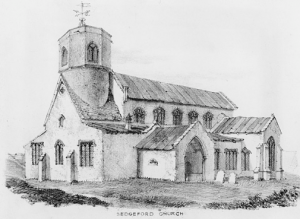
Robert Ladbrooke’s drawing of the church from the middle of the nineteenth century.
Anyway, a rather lovely church, this is one I’d like to return to and look inside.

